Deadlines are that necessary part of an illustrator’s life that keep things moving steadily along, bringing doodles to fruition, and force the mind to creatively solve a problem in a limited period of time. And of course, met deadlines (assuming the art is also satisfactory) not only bring joy to an art director’s heart, but have much more far reaching effects, beyond the publishing house and/or movie studio, to the audience at large, often for years to come.
I had such a deadline right on the heels of arriving back from a busy weekend at November’s CTNX 2013 (The Creative Talent Network Animation Exposition in Burbank, California). I hit the ground running—less than four days to draw, paint, digitally clean up, and submit a finished illustration. Of a reconstructed sabercat, Smildon fatalis of La Brea Tar Pit fame, no less.
The Art Director at Aeon Magazine wanted the illustration to be in the spirit of my book, The Katurran Odyssey, simple, with personality, and some environmental elements. Fortunately, being a paleo geek, I was pretty familiar with this prehistoric group of big cats, and had read the article prior to leaving for CTNX. I only had time to dash off a few very simple thumbnails prior to departure. No time to noodle, add details, or anatomy. Needless to say, I had sabercats on the brain the entire time I was there.
Sabercats of the genus Smilodon are only distantly related to the Big Cats of the genus Panthera (Lions, tigers, jaguars, and leopards. Snow leopards, clouded leopards, cheetahs, and cougars are physically and genetically distinct, and have their own genera. In fact, cheetahs and cougars are more closely related to one another than to those others aforementioned). In addition to the long canines, to look at these creatures, you’d note that sabercats have much longer muzzles than lions, and shorter hind legs relative to their forelegs, giving them a more pronounced sloping hyena-like silhouette rather then the classic feline profile.
Arriving back, I chose the rough that seemed to have the most interest as far as composition, environment, and story element went (the seated, snarling saber cat being mobbed by jays), and got going. Spread over my drawing table were skeletal and muscular references of Smilodon and African lions (despite the genus gap, they still had the essentials of feline anatomy between them). In my arsenal were years of drawing felines, and some photo references of lions and other large cats, even house cats, to make sure the pose and expression I was creating was on target.
At times, I even recruited my whippet Timmy, to sit in the same pose. A very patient little dog is he.
One thing I had to keep in mind is that due to the relatively long muzzle, the eyes of the Smilodon seem to be optically closer together than that of a typical lion, although this isn’t physically the case, and I had to discipline myself from automatically putting them farther apart!
Because of the short deadline, it was really important to put that reality completely out of my mind—to quiet the angst factor. Worrying about making it would not get things done any faster, and most likely would hamper the process and waste precious energy. So, I decided to relax and enjoy the process. I was doing what I loved, after all! Paleo illustration, how cool is that!
Plus, like myself, Smilodon fatalis is a native of California, and the environment would be similar to what I see every day, from the California poppies, to the scrub jays that are mobbing him (and yes, I double checked with La Brea to make sure).
I drew the beast using an ordinary pentel mechanical pencil (from Walgreens) on Canson tracing paper, copied it digitally onto bond paper, and then used Copic Sketch Markers for their speed and watercolor effects (a technique we used widely in the ILM art department). I had PBS online Nature videos going on in the background, learned things I’d never known about wild turkeys, and before I knew it, a full day before deadline, the picture was done. Keeping things simple, deciding not to worry about the impending deadline, and enjoying what I love to do made this a wonderful and happy experience.
Now, I want to do a mastodont!
You can view the full article at: http://aeon.co/magazine/nature-and-cosmos/the-rise-and-fall-of-the-great-sabercats/


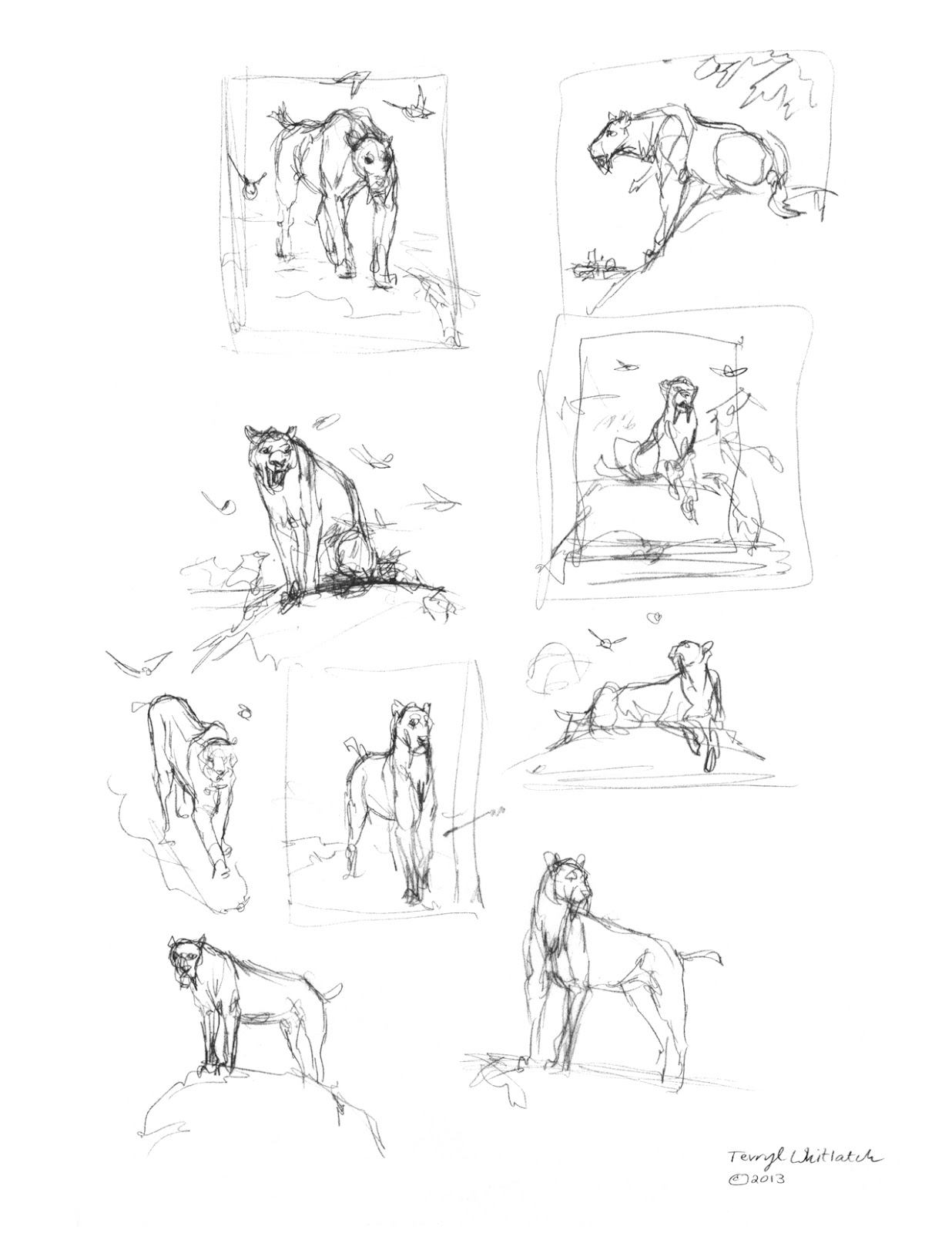
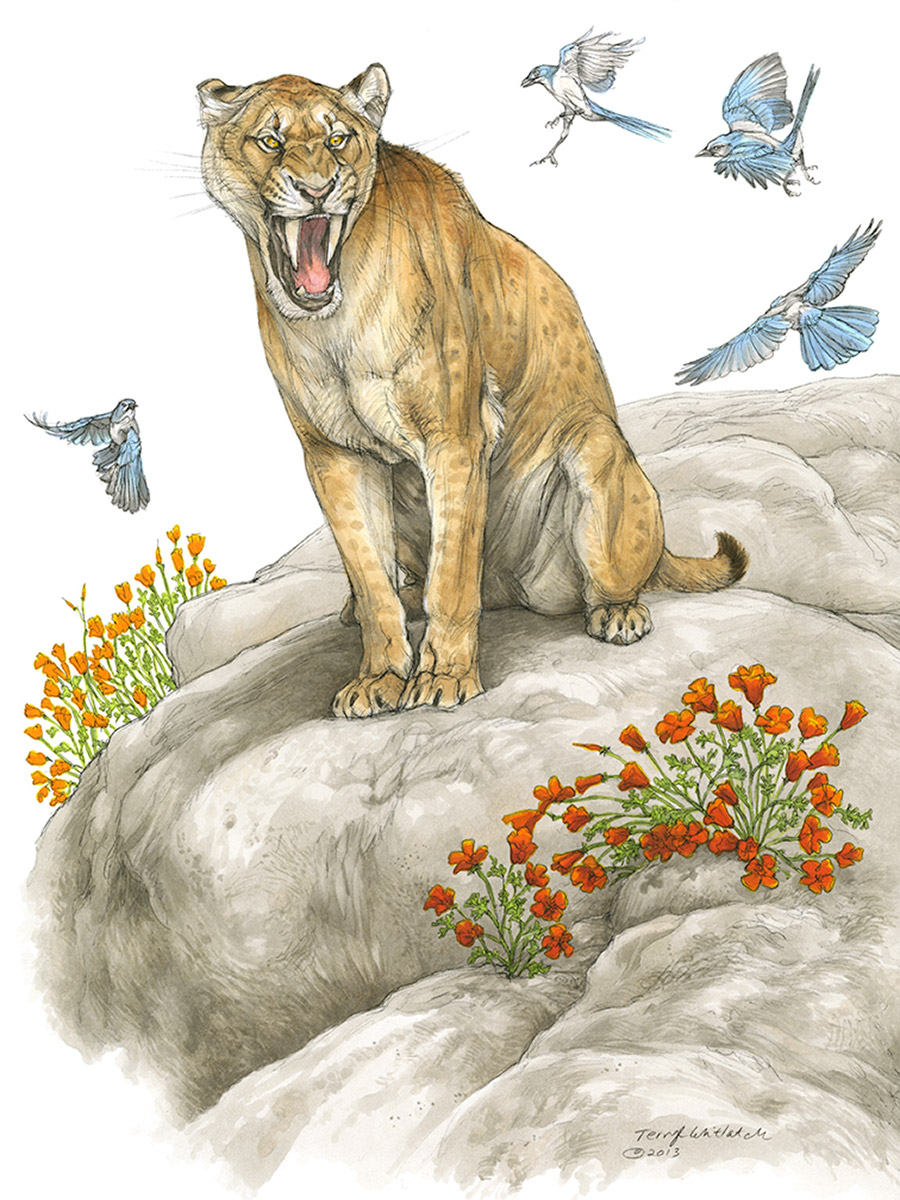
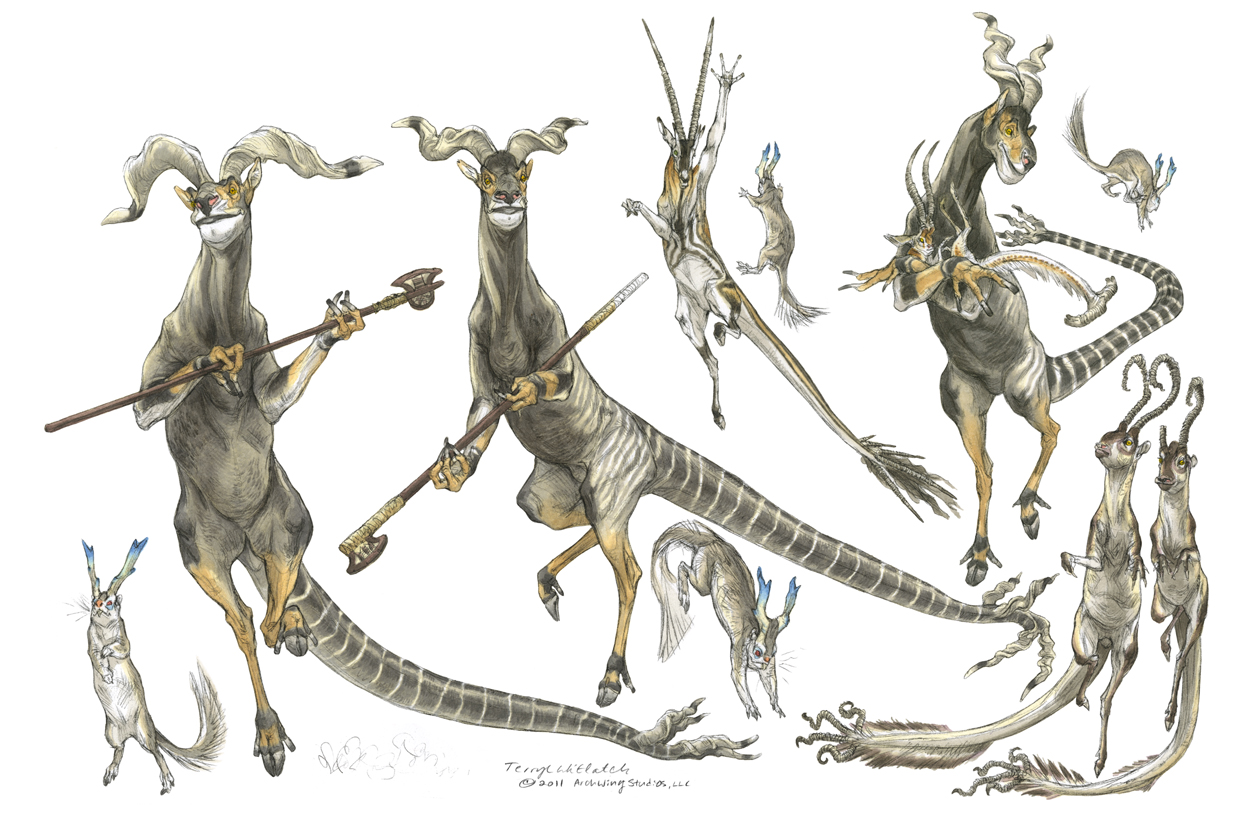
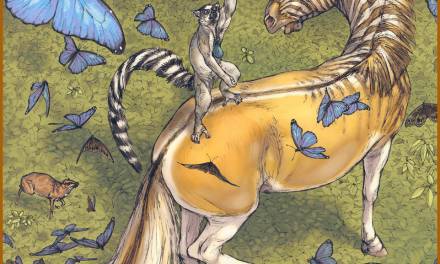
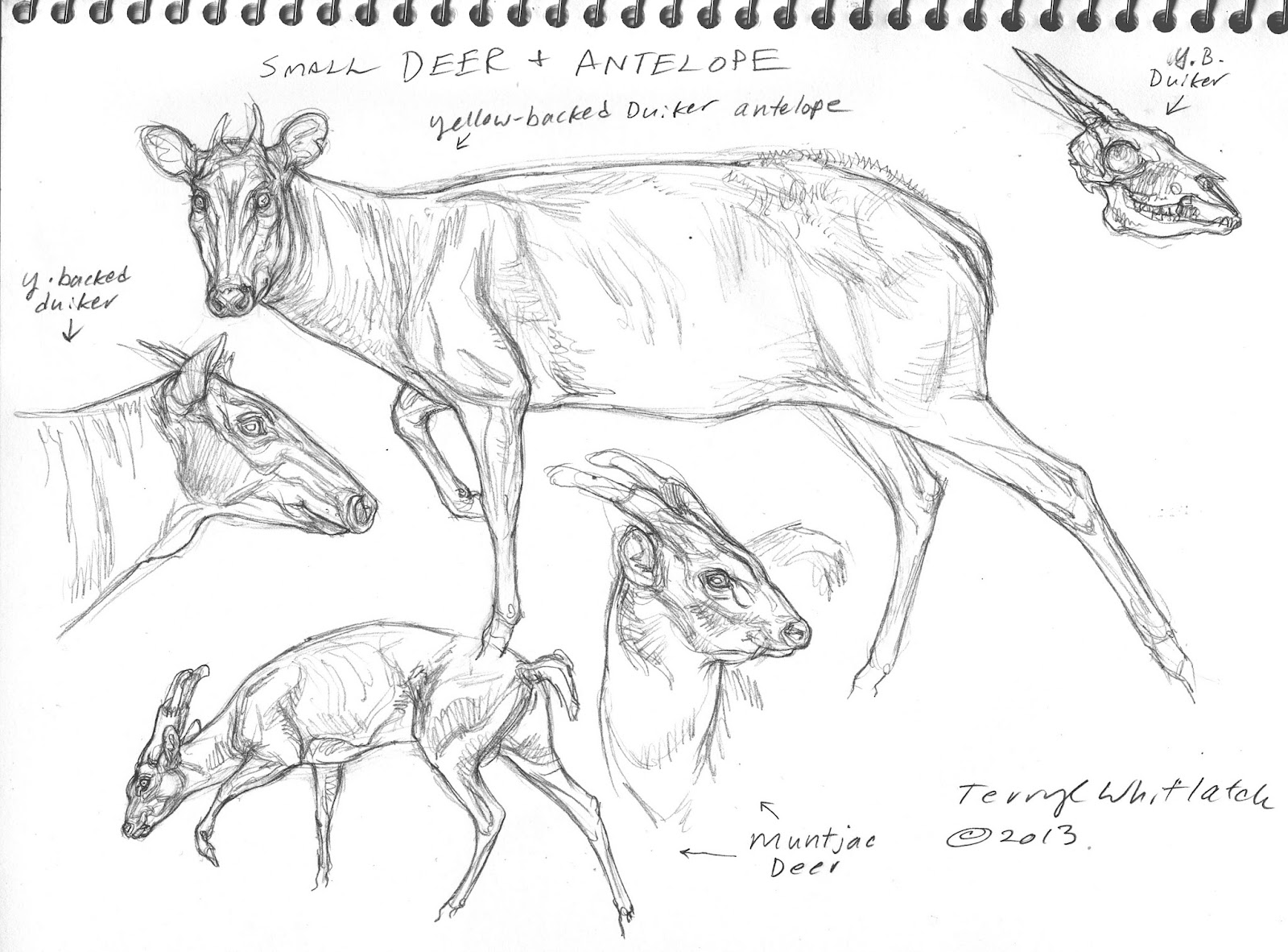
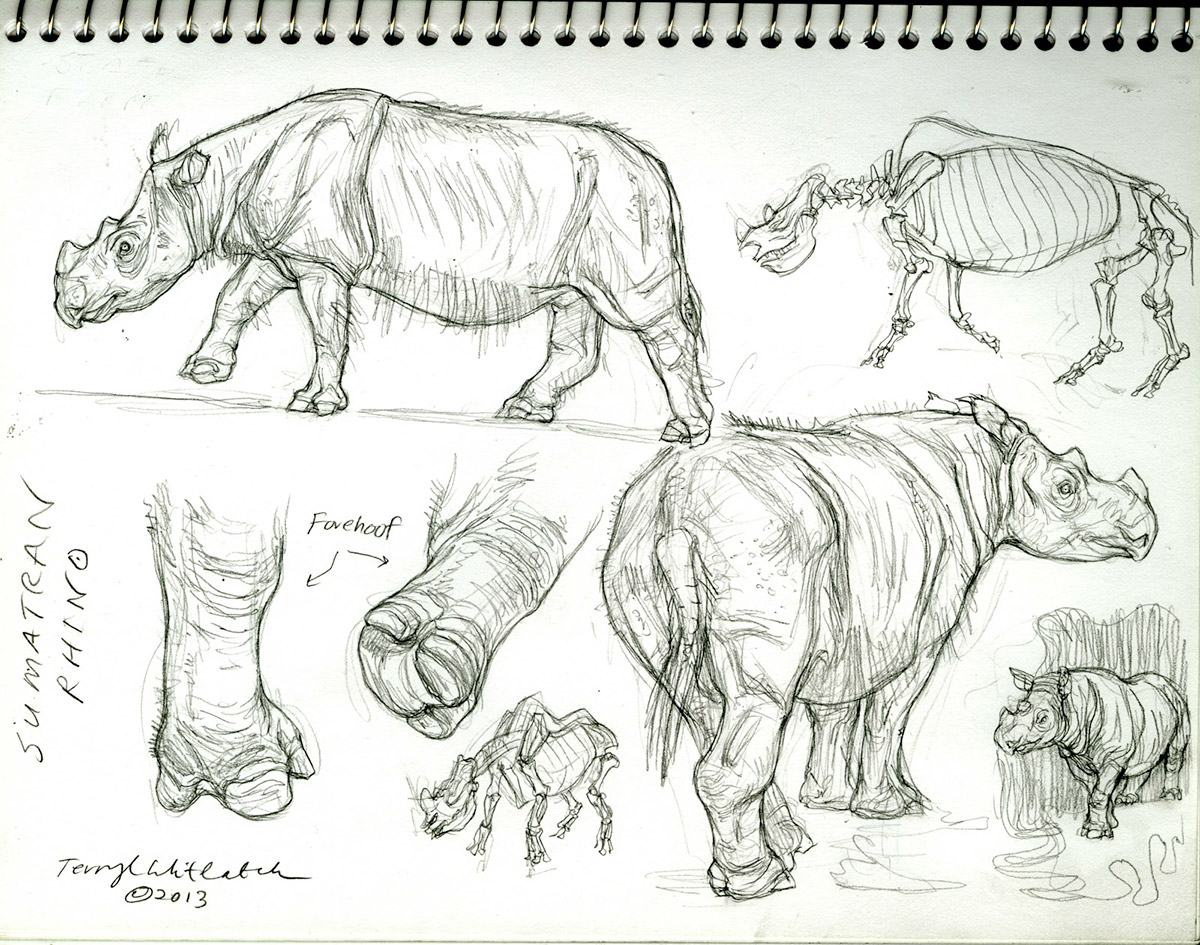

Thanks so much for posting this! I've got an especially fond spot in my heart for sabers, and this one's got such great personality to it! It's assuring to know that even the pro's end up crunching on deadlines sometimes, too.
You continue to inspire Terryl.
I must try out these markers! This illustration is amazing.